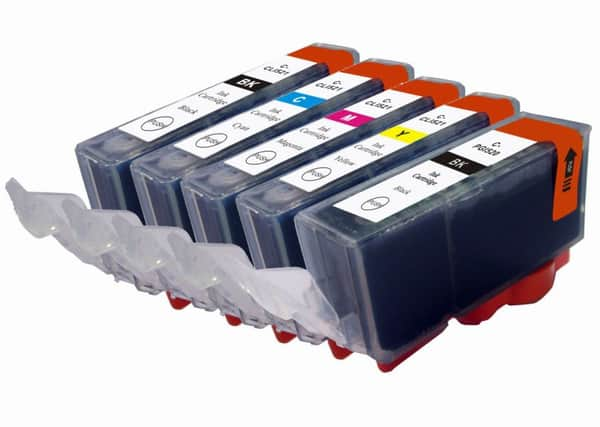Four ways to get better value from your printer


I’m not being facetious here. I’ve worked my way through all the major brands and technologies, and every one has been an expensive disappointment.
It’s not the printers themselves that are the problem; it’s the refills. They’re overpriced and they run out too quickly. Even when they haven’t fully run out, the printer will make you replace them. And if you don’t use them often enough, the printheads are apt to dry up and render the whole machine useless.
Advertisement
Hide AdAdvertisement
Hide AdWhat’s more, the amount of ink in the cartridge has shrunk over the years on roughly the same scale as a California reservoir. So-called XL cartridges today often contain no more fluid than regular ones did five years ago. If these things were optics at your local pub, the landlord would be had up for serving short measures.
So as the big makers gradually but inevitably price themselves out of the market, my recommendation is to use a reliable £40 black-and-white laser printer, or simply do without one altogether. This is not as radical as it sounds: photos no longer need to be printed to be distributed to family or friends - they’re better shared on Facebook or a specialist album site like Flickr. And business documents are better saved on a cloud than on paper.
However, if homework or other requirements determine that a colour printer is still essential in your household, here are four golden rules…
1. Unless you have specialised requirements - the ability to print on A3 paper, for instance - don’t spend any more than necessary on the printer itself. You’ll get no better results from a model costing £80 than from a £35 one, and the makers know that they can almost give the machines away in the expectation of getting their money back many times over on the refills.
Advertisement
Hide AdAdvertisement
Hide Ad2. Insist on a printer with four ink cartridges, not two. This avoids combining the yellow, cyan and magenta inks into a single reservoir and thus having to replace all three when only one has run dry.
3. Don’t install all the software that comes with the printer. You do need the Windows or Mac drivers that communicate with your computer, but not the superfluous “print centre” apps which are there simply to use up ink.
4. Most important, take with a pinch of salt the manufacturer’s warnings of ruination should you use print cartridges made by someone other than themselves. Most of the research and development effort these days seemingly goes into defeating third-party cartridges, which typically sell for fraction of the “recommended” price. This involves putting “security” microchips on to genuine ink to deter imitators - but guess what? The chips are ten-a-penny, and rivals use them, too. And with a set of genuine cartridges for one printer going for £27 online and “compatible” ones for just £7, it doesn’t take much R&D on your part to see where the value lies.